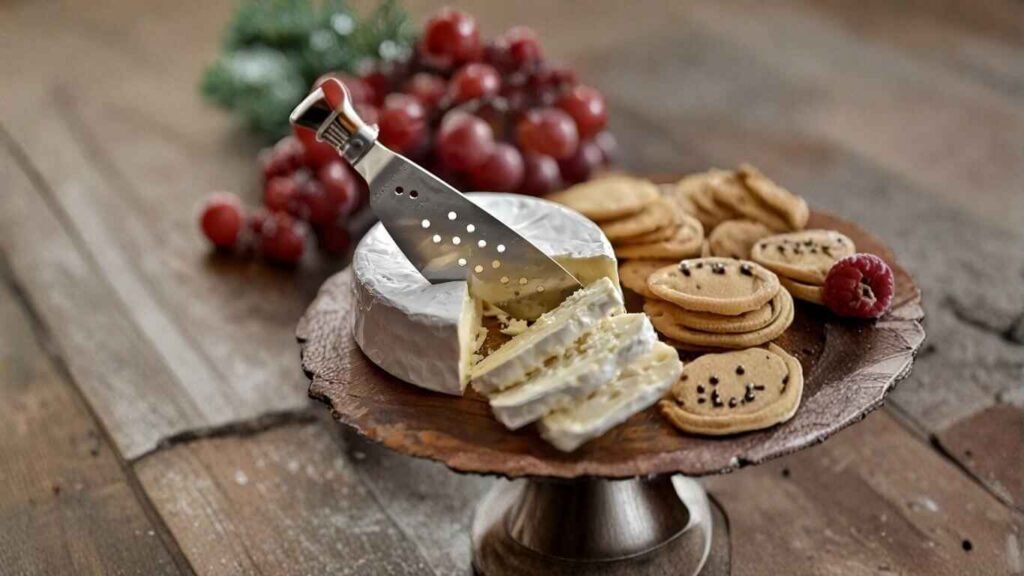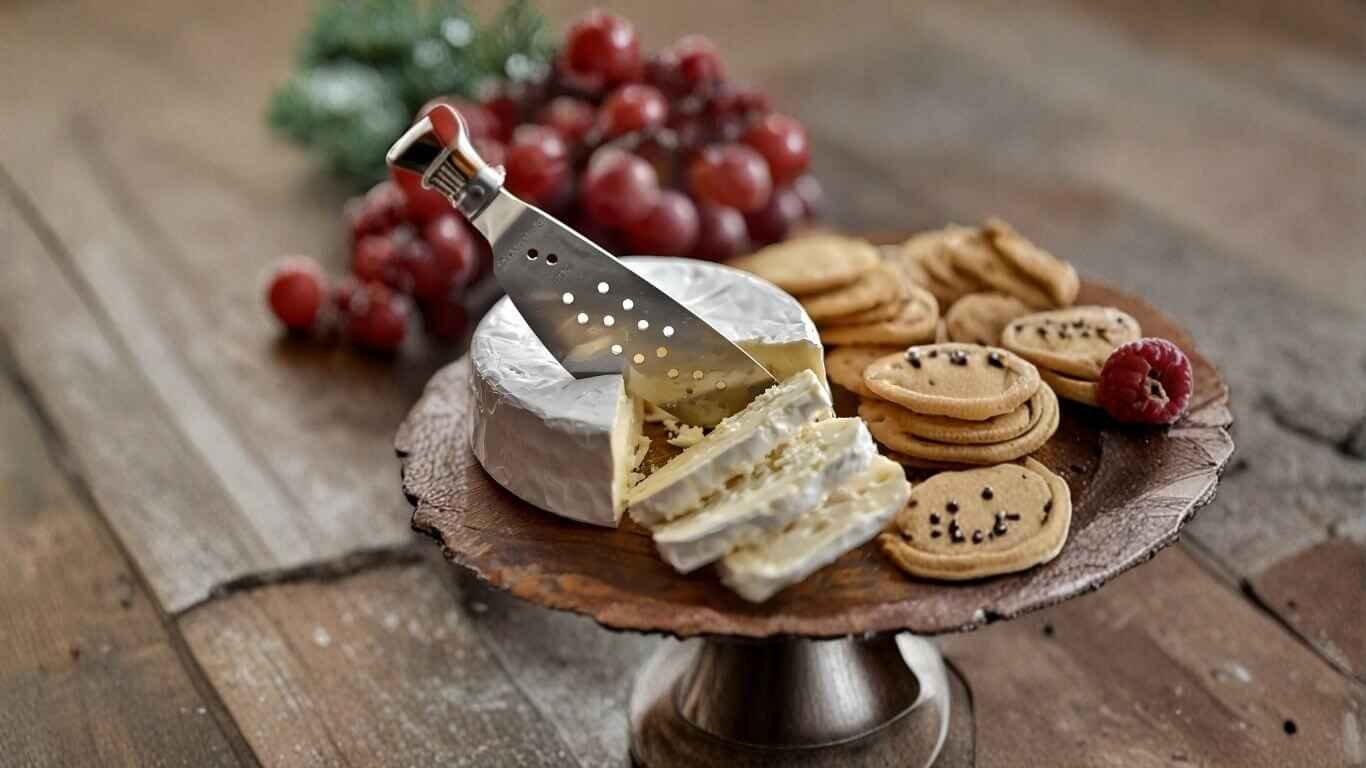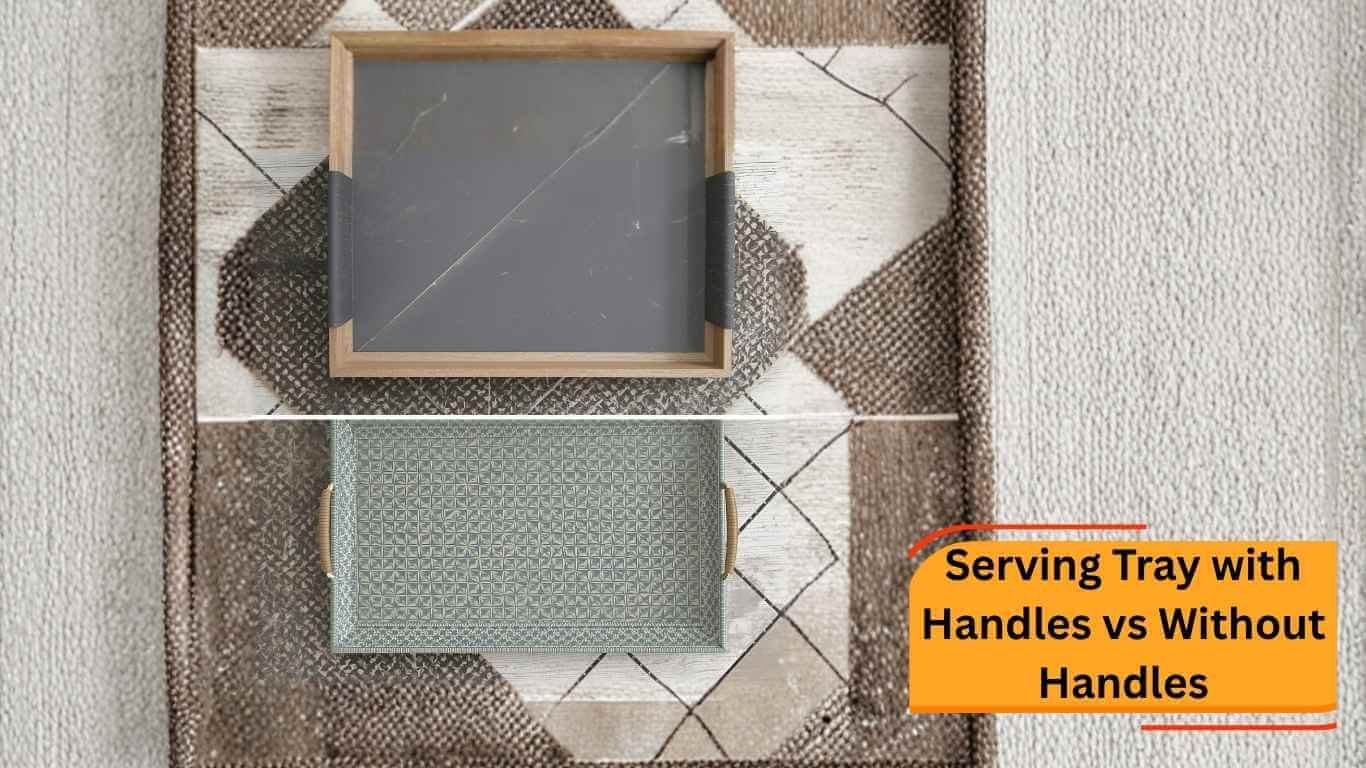We’ve all been there. You’ve assembled a beautiful cheese board, the wine is breathing, and your guests are mingling. You move in to serve the star of the show a gorgeous, perfectly ripe wheel of Brie and disaster. You’re left with a “Brie-smear,” a crushed rind, and a knife coated in a thick, sticky layer of delicious, wasted cheese.
It’s a frustrating experience, but it’s not your fault. The problem isn’t the cheese; it’s the tool.
Soft cheeses, with their delicate rinds and creamy, unctuous interiors (think Brie, Camembert, Chèvre, or a pungent blue cheese), are notoriously difficult to cut. They are designed to be sticky. Your standard kitchen knife, no matter how sharp, is built for slicing and dicing firm vegetables, not for navigating a soft, sticky paste.
This is where a specialty tool comes in. Investing in a high-quality cheese knife for soft cheese is one of the easiest ways to elevate your entire cheese experience. In this kitchen knife guide, we’ll explore why this specific knife is non-negotiable for any cheese lover and how to use it like a pro.
What Is a Soft Cheese Knife? (And Why Does It Look So Weird?)
At first glance, a soft cheese knife looks odd. It’s often slender, sometimes offset, and almost always has a series of holes or perforations running along the blade. These aren’t just for decoration; they are brilliant, purpose-driven cheese knife features.
The entire design is based on one principle: reducing surface area.
Sticky, creamy cheese clings to a blade. A wide, solid blade (like your chef’s knife) has a large surface area, creating significant drag and friction. This is what causes the cheese to stick, tear, and smear.
Here’s how a soft cheese knife’s design solves this problem:
- Perforations (The Holes): This is the most important feature. The holes, or “perforations,” drastically reduce the amount of blade that actually touches the cheese. This creates air pockets, preventing the sticky paste from creating a vacuum-like seal. The result is a clean, non-stick release.
- Thin, Narrow Blade: A slender blade profile complements the holes, further minimizing contact and gliding through the cheese with minimal resistance. This is crucial for not crushing the delicate structure.
- Sharp Edge: A sharp, thin edge is essential for cleanly slicing through the bloom-covered rind of a Brie or Camembert without squishing the creamy center.
- Forked Tip (Optional but Common): Many soft cheese knives feature a forked tip. This allows you to slice the cheese and then use the same tool to pick up the piece and serve it, all without getting your fingers involved. It’s an elegant piece of cheese board essentials functionality.
This specialized design is the secret behind those perfect, Instagram-worthy wedges.
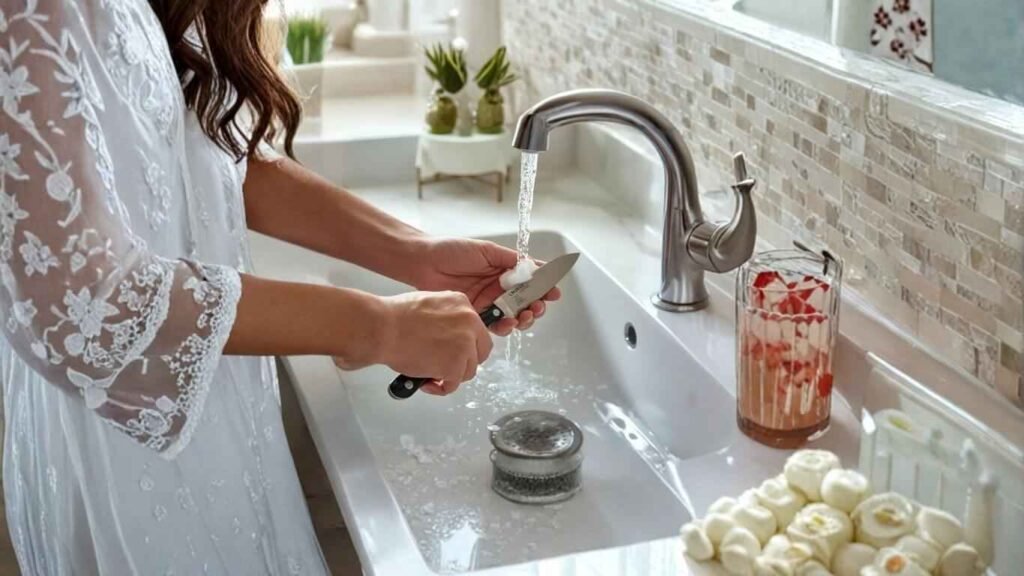
The Messy Truth: Why Your Regular Kitchen Knife Is the Wrong Tool
Let’s be clear: you can use a regular kitchen knife for cheese, but the experience is messy and often ruins the cheese’s presentation.
Here’s what happens when you use a standard chef’s knife or paring knife on soft cheese:
- Sticking and Smearing: As explained above, the wide, solid blade acts like a glue trap. You push down, and the cheese sticks firmly to both sides. When you pull the knife out, it drags a large portion of the paste with it.
- Crushing and Squishing: To overcome the sticking, you naturally apply more downward pressure. This added force crushes the delicate cheese. Instead of a clean wedge, you get a flattened, sad-looking lump. This is especially true for the best cheese knife for Brie a thick knife will destroy its fluffy interior.
- Rind Tearing: The “bloom” or rind on cheeses like Brie and Camembert is part of the tasting experience. A dull or overly thick knife will tear this rind, causing the creamy “paste” inside to ooze out prematurely.
A dedicated non-stick cheese knife is designed to slice, not to smear or crush. It respects the integrity of the cheese, which is the first step to a beautiful soft cheese presentation.
How to Choose the Best Cheese Knife for Soft Cheese
When you start shopping, you’ll see a few different types of cheese knives that all work well for soft textures. Your choice depends on your preference and the specific cheeses you eat most often.
1. The Classic Perforated Knife
This is the most common and versatile cheese knife for soft cheese. It features a sharp edge and a series of holes along the blade. It’s an excellent all-rounder, perfect for wheels of Brie, Camembert, and semi-soft cheeses like Havarti or Muenster.
2. The “Skeleton” or Open-Blade Knife
This knife takes the non-stick concept to the extreme. Instead of a solid blade with holes, the blade itself is just a thin “frame.” This provides the absolute minimum surface area, making it ideal for the stickiest, gooiest cheeses imaginable, like a very ripe Époisses or a creamy Stilton.
3. The Soft Cheese Spreader
This isn’t really a “knife” but a spreader. It often has a wide, rounded blade with a dull edge. It’s not for cutting wedges from a wheel. Instead, it’s the perfect tool for very soft, spreadable cheeses like Boursin, fresh Chèvre (goat cheese), cream cheese, or a pot of pottage cheese. It’s a cheese board essential item for any board featuring dips or spreads.
4. The Offset Blade Knife
This knife features a handle that is “offset,” or higher than the blade itself. This ergonomic design allows your knuckles to stay clear of the cutting board when you’re slicing all the way through a large wheel. It’s arguably the best cheese knife for Brie or any other cheese served as a full, round wheel.
Materials and Handles
- Blade: Look for high-carbon stainless steel. It’s the industry standard because it holds a sharp edge, resists rust, and doesn’t impart any metallic flavor to the cheese. Ceramic blades are also fantastic, as they are exceptionally sharp and naturally non-stick, but they can be more brittle.
- Handle: This is all about comfort and aesthetics. Wood handles (like olive, acacia, or walnut) look beautiful and rustic. Metal handles offer a sleek, modern look. Composite or plastic handles are often the most ergonomic and dishwasher-safe.
How to Cut Soft Cheese Like a Pro: A Step-by-Step Guide
Using your new knife correctly is just as important as having it. Here’s how to cut soft cheese for a flawless presentation.
Step 1: Temperature is Everything
This is one of the most important soft cheese serving tips. Never cut soft cheese straight from the refrigerator. It will be too firm, and the flavors will be muted. Take your Brie, Camembert, or other soft cheese out of the fridge 30 to 60 minutes before serving. This allows it to soften slightly and its full, complex flavors to bloom.
Step 2: The Hot Water Trick
Here is a professional secret: Heat your blade. Prepare a tall glass of hot water and a clean kitchen towel. Before your first cut (and between subsequent cuts, if the cheese is very sticky):
- Dip the knife blade into the hot water for a few seconds.
- Quickly wipe it dry with the towel.
- Make your slice.
The warm, clean blade will glide through the cheese like a hot knife through butter because, chemically speaking, it is!
Step 3: Use the Right Slicing Motion
Don’t “saw” back and forth. This will tear the cheese. A soft cheese knife is designed for a single, confident, downward motion. Press firmly and evenly from the top of the rind to the bottom.
Step 4: Cut by Shape
- For Wheels (Brie, Camembert): Cut it like a cake. Start from the center and cut small, long wedges. This ensures every guest gets a “perfect bite” that includes the soft rind and the creamy center (known as the pointe).
- For Logs (Goat Cheese/Chèvre): Use your hot knife (or even a piece of unflavored dental floss!) to slice the log into clean, round discs.
- For Wedges (Blue Cheese): Start at the center (the “point”) and cut slices outward, fanning them out from the thinnest point to the thickest part of the rind.
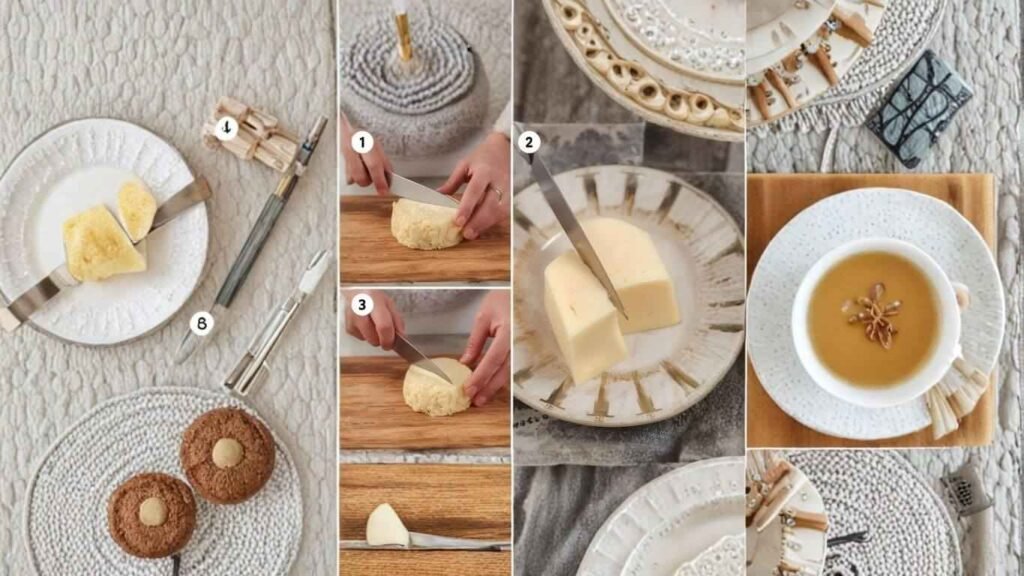
Keeping Your Knife in Top Condition: Cheese Knife Maintenance
A quality cheese knife will last a lifetime if you treat it right.
- Hand Wash Immediately: This is my top tip. Cheese (especially soft cheese) is oily and can leave a residue. Don’t let it sit. Hand wash your knife in warm, soapy water right after use.
- Avoid the Dishwasher: The high heat and harsh detergents of a dishwasher can be brutal. They can dull the blade and, more importantly, will destroy beautiful wooden handles, causing them to crack, warp, or fade.
- Dry Thoroughly: Never let your knife air dry. Use a soft towel to dry it completely before storing it to prevent any chance of rust or water spots.
- Store Safely: Don’t just toss it in a drawer where it can bang against other utensils. This will dull or chip the blade. Store it in a knife block, on a magnetic strip, or in the protective sheath it came with.
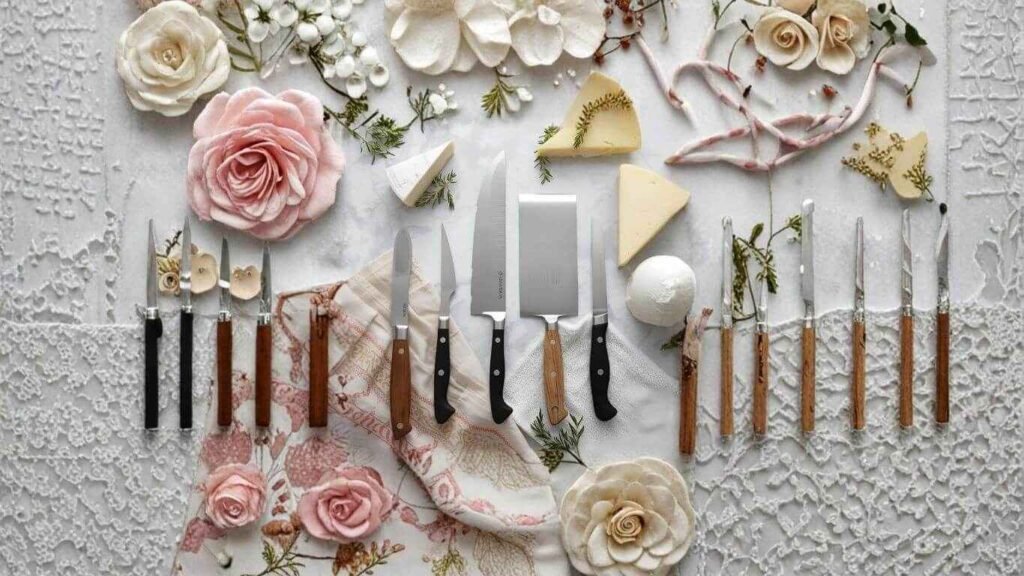
Expert Tips for Perfect Soft Cheese Presentation
As a culinary enthusiast, I’ve learned that a few extra touches make all the difference.
- One Knife Per Cheese (Family): If you’re serving multiple cheeses, especially a very pungent one like a blue cheese, give it its own knife. You don’t want your delicate, creamy Brie to taste like a funky Gorgonzola. At a minimum, have one knife for soft cheeses, one for hard, and a separate one for blues.
- Make the First Cut: Have you ever seen guests hesitate around a perfect, untouched wheel of cheese? It’s a real phenomenon! They don’t want to be the first one to “ruin” it. As the host, make the first cut. Slice one or two elegant wedges and place them slightly apart from the wheel. This invites your guests to dig in.
- Wipe Between Cuts: Even with the hot water trick, a very sticky cheese can build up. Keep that damp towel handy and give the blade a quick wipe between slices to ensure every single piece is perfectly clean.
Frequently Asked Questions (FAQs)
Q: Why do cheese knives have holes in them?
The holes (perforations) are the key non-stick cheese knife feature. They reduce the surface area of the blade, which means there is less for the sticky, creamy cheese to cling to. This results in less drag and a much cleaner cut.
Q: Can I use a soft cheese knife for hard cheese?
It’s not recommended. A soft cheese knife has a thin, often slightly flexible blade designed for soft textures. Using it on a hard, aged cheese like Parmesan or Pecorino could chip, bend, or even break the blade. You need a dedicated hard cheese knife (which looks like a small, sharp spade or cleaver) for that job.
Q: What is the single best cheese knife for Brie?
For my money, the offset perforated knife is the champion. The perforations handle the sticky paste, and the offset handle gives you the leverage to cut cleanly through the bottom rind without rapping your knuckles on the cheese board.
The Right Tool for a Perfect Experience
A cheese knife for soft cheese isn’t a snobby, single-use gadget. It’s a beautifully engineered tool designed to solve a very specific, very sticky problem.
Using the right knife transforms the act of serving cheese from a messy chore into an elegant, satisfying ritual. It respects the hard work of the cheesemaker by presenting their product in the best possible light. It ensures your guests get a perfect, clean-cut piece every time.
So, the next time you’re building a beautiful cheese board, don’t let your tools let you down. Ditch the frustration, embrace the right knife, and get ready to serve the perfect slice, every single time.
